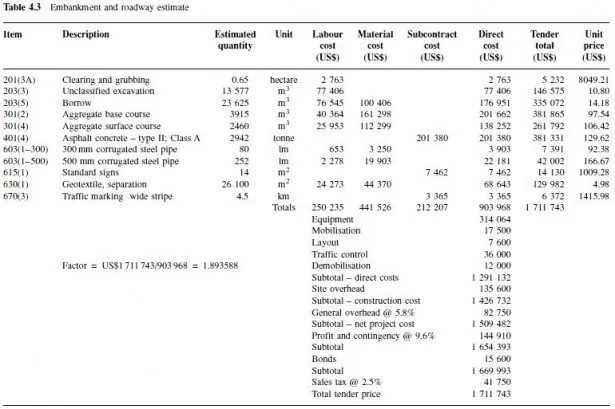A turnkey contract is one in which the owner and contractor agree on a fixed contract sum for a contract under which the contractor will take responsibility for the entire project. Such agreements are often designated as EPC contracts, because of the prime responsibilities for engineering providing basic and detailed design, procurement supplying parts and other goods required for the project and construction erecting and commissioning the project (Majmudar, 2001). The well-known and much-respected Federation Internationale des Ingenieurs-Conseils (FIDIC) designates such projects as EPC turnkey projects (F´ed´eration Internationale des Ing´enieurs-Conseils, 1999). In this type of project, it is a construction organisation that usually enters into the contract with the owner (called the Employer by FIDIC and often the Principal in some countries).
At first glance, this form looks much like the designbuild form discussed earlier. However, the scope of the contractors responsibility is typically broader than basic design, procurement and construction, as it includes such services as project financing and land procurement and other tasks not generally within the designbuild scope. The owner provides a brief describing desired outcomes, performance criteria and standards, the parties agree on a fixed price and the contractor proceeds, with no participation by the owner in the performance of the work (McMullan, 1994). When the project is complete, the owner inspects the work, and, if it meets the requirements, hands over the cheque, turns the key, enters the facility and commences operation (Bennett, 1996; Clough and Sears 1994). If the services of the contractor have included land acquisition, the owner literally purchases the entire completed project from the contractor at the end of the project. Projects ranging from process and power plants to public housing projects have been brought to completion successfully using the turnkey method. Dorsey (1997) suggests that turnkey contracting is rather like purchasing a new automobile, but with such important differences as (1) the owner is bound by contract to buy the project upon completion, with serious legal consequences for rejecting the completed project, (2) performance specifications are often used to establish materials, equipment and general quality and (3) owner-generated changes will alter the price once the project is underway.
In the UK, a recent turnkey example is the completion of the worlds first commercial digital terrestrial television network for the British Broadcasting Corporation and ONdigital. Crown Castle International was responsible for design specification, network planning, selection, purchase, installation, operation and maintenance of transmitter electronics, antennas, power and other components, specification and procurement of a signal distribution network and operation and management of the transmitter and transmission network (Crown Castle International, 2001). Note that the operation and management of these facilities may be somewhat atypical compared to projects whose owners assume operating responsibility after completion of construction. The importance to the owner of a fixed final price, and often a certain completion date, makes this method attractive. The owner expects to pay a premium for the certainties provided in such a contract and for the wider risks assumed by the contractor, such as unexpected ground conditions.

